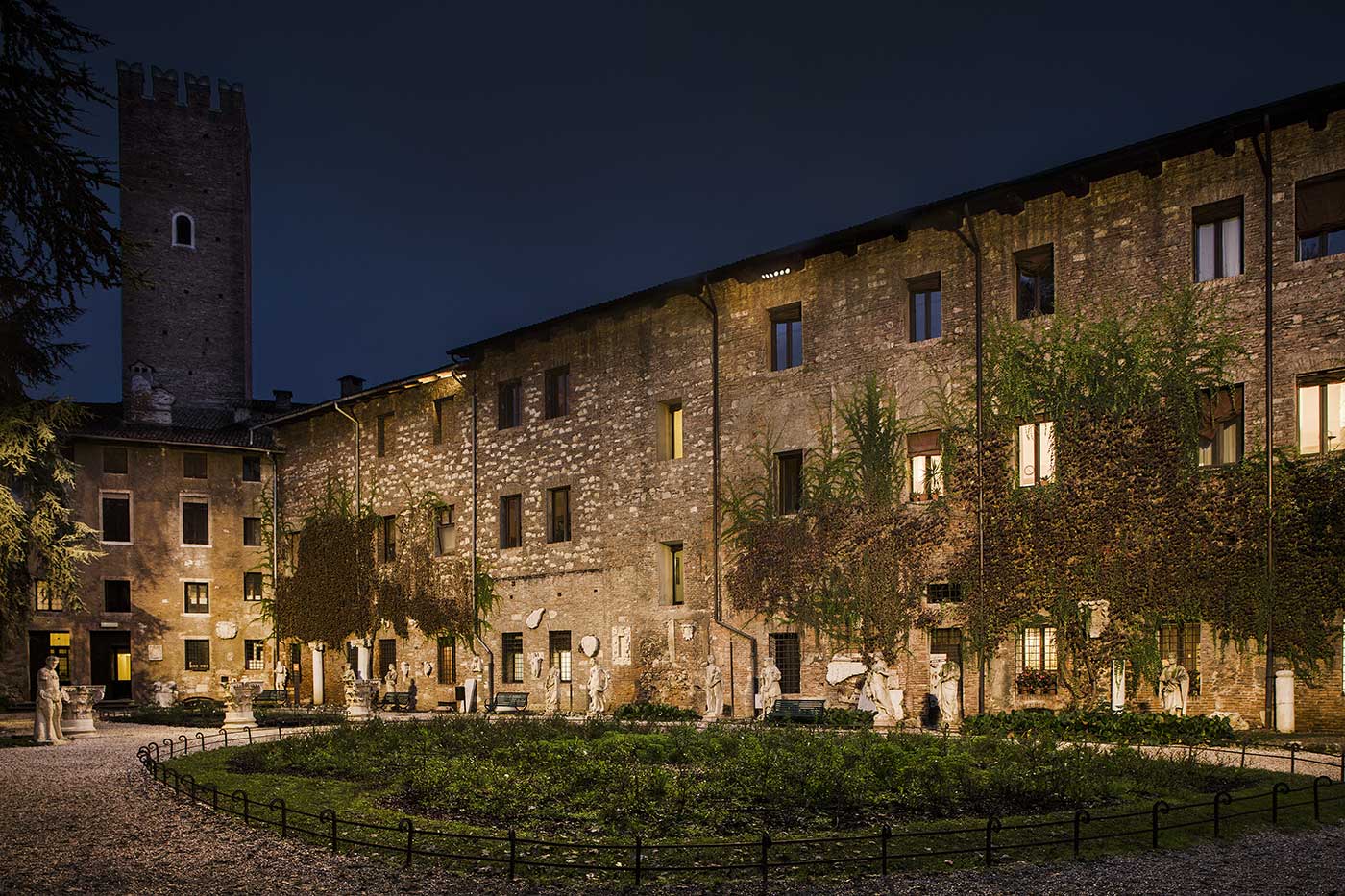
CulturalHeritageOnline: Teatro Olimpico
Teatro Olimpico

The Olympic Theater is one of the artistic wonders of Vicenza. It is located inside the so-called Palazzo del Territorio, which looks onto Piazza Matteotti, at the eastern end of Corso Palladio, the main route of the historic center. In the Renaissance, a theater is not a building in its own right - as will become practice later on - but it consists in the temporary setting up of open spaces or pre-existing volumes; in the case of Vicenza, palace courtyards or the hall of the Palazzo della Ragione. In 1580 Palladio was 72 years old when he was commissioned by the Olympic Academy, the cultural assembly to which he himself belongs, to set up a stable theater venue.

The project is clearly inspired by the Roman theaters described by Vitruvius: an elliptical cavea, surrounded by a colonnade, with statues on the frieze, facing a rectangular stage and a majestic proscenium on two architectural orders, opened by three arches and punctuated by half-columns, all inside which there are niches and niches with statues and panels with bas-reliefs.

The criticism defines the work as 'mannerist' for the intense chiaroscuro, accentuated among other things by a series of optical devices dictated by the great experience of the architect: The progressive withdrawal of the fronts with the height, visually compensated by the protruding statues; the play of projections and niches that increase the illusion of depth. Palladio prepares the drawing a few months before his death and will not see it completed; it was his son Silla who oversaw the execution by delivering the theater to the city in 1583. The first representation, on the occasion of the Carnival of 1585, is memorable: the choice falls on a Greek tragedy, the Oedipus King of Sophocles, and the scenography reproduces the seven streets of Thebes that can be seen in the five openings of the proscenium with a refined game prospective. The creator of this little wonder in wonder is Vincenzo Scamozzi, Palladio's spiritual heir.

The effect is so successful that these wooden superstructures will become an integral part of the theater. Scamozzi is also entrusted with the construction of the accessory rooms: the Odeo, or the hall where the Academy meetings took place, and the Antiodeo, decorated in the seventeenth century with monochrome squares by the talented painter from Vicenza Francesco Maffei.
The fame of the new theater spread first in Venice and then throughout Italy, arousing the admiration of those who saw the humanistic dream of reviving classical art materialized there. Then, despite such an exciting start, the Olimpico's activity was interrupted by the anti-theatrical censorship imposed by the Counter-Reformation and the theater was reduced to a simple place of representation: Pope Pius VI was welcomed there in 1782, Emperor Francis I of Austria in 1816 and his heir Ferdinando I in 1838. With the mid-nineteenth century classical performances resumed from time to time, but we will have to wait until the last post-war period, having escaped the danger of aerial bombing, to seriously return to show in a theater that does not has equals in the world.
Teatro Olimpico
Address: Piazza Matteotti, 11, 36100
Phone: 0444 320854
Site: http://www.teatrolimpicovicenza.it/
Location inserted by Culturalword Abco






